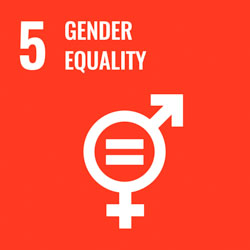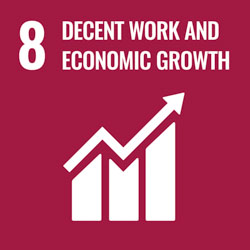Significance
Importance To Berry Global and our Stakeholders
A diverse workforce unites people with varied perspectives, backgrounds, and experiences, sparking the development of innovative solutions, products, and approaches that are critical for our business to stay competitive and meet changing consumer demands. By working to create an environment where all members of our workforce feel included and treated fairly, regardless of their background, we help enhance employee morale, job satisfaction, loyalty, and overall productivity.
Our Diversity, Equity, and Inclusion (DE&I) strategy demonstrates our commitment to meeting evolving societal expectations with ethical leadership as businesses are increasingly evaluated for social responsibility.
Our Customers: By fostering a diverse and inclusive workplace, we can better connect with our diverse customer base and deliver innovative solutions to meet their unique needs. We believe that cultivating an environment that is inclusive of the broad range of cultures, backgrounds and experiences represented among our employees, customers and suppliers is integral to our business success.
Our Investors: Our commitment to diversity and inclusion makes us more adept at attracting top talent, fostering innovation, and adapting to changing market dynamics - factors that contribute to long-term growth and financial stability.
Our Approach
Diversity, equity, and inclusion are integral to Berry’s leadership, team performance and cohesion, and ability to innovate and maintain a competitive advantage for the future. We are committed to building and maintaining an inclusive organizational culture by embedding equity into our business practices, which helps ensure all are accepted and have the opportunity to thrive and equally contribute to the success of the company.
We strive to foster a people-first culture through our commitment to diversity and inclusion, talent strategies that attract and build a skilled workforce, and impactful philanthropic initiatives. We believe that cultivating an environment that is inclusive of the broad range of cultures, backgrounds and experiences represented among our employees, customers and suppliers is integral to our success.
Highlights and Target Progress
| Target | 2023 Progress |
| Increase the percentage of women in salaried roles to at least 40% by 2027 |
We increased the percentage of women in salaried roles to 37.2% in 2023, from 36.2% in 2021. |
| Increase the percentage of people of color in U.S. based salaried roles to at least 18% by 2027 |
We increased the percentage of people of color in U.S. based salaried roles to 17.9% in 2023, versus 16.7% in 2022 and 15.9% in 2021. We expect to achieve our 18% goal prior to the 2027 target year. |
Key Metrics
The below metrics are based on Berry's fiscal years unless otherwise noted.
|
Diversity, Equity, and Inclusion |
|||||||
| 2023 | |||||||
| Workforce Demographic | Overall Workforce Data | ||||||
| Male | Female | Total Employees | |||||
| Total Company | Full-Time Employees | 30,228 | 11,896 | 42,124 | |||
| Part-Time Employees | 704 | 852 | 1,556 | ||||
| Temporary Employees | No Data | No Data | 3,165 | ||||
| North America | Full-Time Employees | 14,398 | 6,005 | 20,403 | |||
| Part-Time Employees | 263 | 240 | 503 | ||||
| Temporary Employees | No Data | No Data | 480 | ||||
| South America | Full-Time Employees | 907 | 141 | 1,048 | |||
| Part-Time Employees | 23 | 28 | 51 | ||||
| Temporary Employees | No Data | No Data | 28 | ||||
| EMEIA | Full-Time Employees | 12,517 | 4,320 | 16,837 | |||
| Part-Time Employees | 416 | 583 | 999 | ||||
| Temporary Employees | No Data | No Data | 1,997 | ||||
| Asia | Full-Time Employees | 2,406 | 1,430 | 3,836 | |||
| Part-Time Employees | 2 | 1 | 3 | ||||
| Temporary Employees | No Data | No Data | 660 | ||||
| 2023 | |||||||
| Leadership Breakdowns | Number and Percentage by Gender, Racial Diversity, and Age | ||||||
| Board of Directors | Executive Leadership Team (C-Level and EVPs) |
||||||
| Number | Percentage | Number | Percentage | ||||
| Total | 12 | - | 49 | - | |||
| Gender | Male | 9 | 75.0% | 44 | 89.8% | ||
| Female | 3 | 25.0% | 5 | 10.2% | |||
| Racial Diversity: Underrepresented Minorities | Total | 2 | 16.7% | 5 | 10.2% | ||
| Male | 0 | 0.0% | 4 | 8.2% | |||
| Female | 2 | 16.7% | 1 | 2.0% | |||
| Age | Under 30 | 0 | 0.0% | 0 | 0.0% | ||
| 30 - 50 | 1 | 8% | 19 | 38.8% | |||
| Over 50 | 11 | 92% | 30 | 61.2% | |||
| 2021 | 2022 | 2023 | |||||
| Workforce Breakdown (Gender) | Employee Categories by Gender | ||||||
| Male | Female | Male | Female | Male | Female | ||
| Berry Total | All Employees | 33,568 | 13,687 | 32,690 | 13,525 | 30,491 | 12,541 |
| % of All Employees | 71.0% | 29.0% | 70.7% | 29.3% | 70.9% | 29.1% | |
| Salaried Employees | 6,852 | 3,895 | 6,552 | 3,931 | 6,203 | 3,674 | |
| % of Salaried Employees | 63.8% | 36.2% | 62.5% | 37.5% | 62.8% | 37.2% | |
| Management Level and Above | 1,498 | 515 | 1,671 | 589 | 1,853 | 678 | |
| % at Management Level and Above | 74.4% | 25.6% | 73.9% | 26.1% | 73.2% | 26.8% | |
| Vice President and above | No Data | No Data | No Data | No Data | 131 | 24 | |
| % of Vice President employees and Above | - | - | - | - | 84.5% | 15.5% | |
| Consumer Packaging International (CPI) Division | All Employees | No Data | No Data | No Data | No Data | 12,358 | 6,061 |
| % of All Employees | - | - | - | - | 67.1% | 32.9% | |
| Salaried Employees | 3,190 | 1,844 | 2,879 | 1,811 | 2,784 | 1,718 | |
| % of Salaried Employees | 63.4% | 36.6% | 61.4% | 38.6% | 61.8% | 38.2% | |
| Management Level and Above | No Data | No Data | No Data | No Data | 382 | 139 | |
| % at Management Level and Above | - | - | - | - | 73.2% | 26.8% | |
| Vice President and above | No Data | No Data | No Data | No Data | 22 | 4 | |
| % of Vice President employees and Above | - | - | - | - | 84.6% | 15.4% | |
| Consumer Packaging North America (CPNA) Division | All Employees | No Data | No Data | No Data | No Data | 6,675 | 3,264 |
| % of All Employees | - | - | - | - | 67.2% | 32.8% | |
| Salaried Employees | 914 | 537 | 940 | 575 | 866 | 517 | |
| % of Salaried Employees | 63.0% | 37.0% | 62.0% | 38.0% | 62.6% | 37.4% | |
| Management Level and Above | No Data | No Data | No Data | No Data | 406 | 150 | |
| % at Management Level and Above | - | - | - | - | 73.0% | 27.0% | |
| Vice President and above | No Data | No Data | No Data | No Data | 23 | 4 | |
| % of Vice President employees and Above | - | - | - | - | 85.2% | 14.8% | |
| Flexibles Division | All Employees | No Data | No Data | No Data | No Data | 5,143 | 1,446 |
| % of All Employees | - | - | - | - | 78.1% | 21.9% | |
| Salaried Employees | 1,157 | 690 | 1,029 | 659 | 960 | 619 | |
| % of Salaried Employees | 62.6% | 37.4% | 61.0% | 39.0% | 60.8% | 39.2% | |
| Management Level and Above | No Data | No Data | No Data | No Data | 449 | 159 | |
| % of Management Level and Above | - | - | - | - | 73.8% | 26.2% | |
| Vice President and above | No Data | No Data | No Data | No Data | 26 | 5 | |
| % of Vice President employees and Above | - | - | - | - | 83.9% | 16.1% | |
| Health, Hygiene & Specialties (HHS) Division | All Employees | No Data | No Data | No Data | No Data | 5,784 | 1,492 |
| % of All Employees | - | - | - | - | 79.5% | 20.5% | |
| Salaried Employees | 1,219 | 607 | 1,210 | 613 | 1,125 | 557 | |
| % of Salaried Employees | 66.8% | 33.2% | 66.4% | 33.6% | 66.9% | 33.1% | |
| Management Level and Above | No Data | No Data | No Data | No Data | 396 | 153 | |
| % at Management Level and Above | - | - | - | - | 72.1% | 27.9% | |
| Vice President and above | No Data | No Data | No Data | No Data | 21 | 4 | |
| % of Vice President employees and Above | - | - | - | - | 84.0% | 16.0% | |
| Corporate | All Employees | No Data | No Data | No Data | No Data | 536 | 279 |
| % of All Employees | - | - | - | - | 65.8% | 34.2% | |
| Salaried Employees | 372 | 217 | 494 | 273 | 470 | 264 | |
| % of Salaried Employees | 63.2% | 36.8% | 64.4% | 35.6% | 64.0% | 36.0% | |
| Management Level and Above | No Data | No Data | No Data | No Data | 224 | 77 | |
| % at Management Level and Above | - | - | - | - | 74.4% | 25.6% | |
| Vice President and above | No Data | No Data | No Data | No Data | 39 | 7 | |
| % of Vice President employees and Above | - | - | - | - | 84.8% | 15.2% | |
| 2023 | |||||||
| Workforce Breakdown (Age) | Employee Categories by Age | ||||||
| Under 30 | 30 to 50 | Over 50 | |||||
| Berry Total | All Employees | 6,376 | 22,206 | 14,090 | |||
| % of All Employees | 14.9% | 52.0% | 33.0% | ||||
| Salaried Employees | 1,033 | 5,333 | 3,511 | ||||
| % of Salaried Employees | 10.5% | 54.0% | 35.5% | ||||
| Management Level and Above | 85 | 1,364 | 1,082 | ||||
| % at Management Level and Above | 3.4% | 53.9% | 42.7% | ||||
| Vice President and above | 0 | 71 | 84 | ||||
| % of Vice President employees and Above | 0.0% | 45.8% | 54.2% | ||||
| Consumer Packaging International (CPI) Division | All Employees | 2,729 | 9,867 | 5,823 | |||
| % of All Employees | 14.8% | 53.6% | 31.5% | ||||
| Salaried Employees | 545 | 2,487 | 1,470 | ||||
| % of Salaried Employees | 12.1% | 55.2% | 32.7% | ||||
| Management Level and Above | 16 | 315 | 188 | ||||
| % at Management Level and Above | 3.1% | 60.7% | 36.2% | ||||
| Vice President and above | 0 | 11 | 15 | ||||
|
% of Vice President employees and Above |
0.0% | 42.3% | 57.7% | ||||
| Consumer Packaging North America (CPNA) Division | All Employees | 1,772 | 4,626 | 3,541 | |||
| % of All Employees | 17.8% | 46.5% | 35.6% | ||||
| Salaried Employees | 126 | 683 | 574 | ||||
| % of Salaried Employees | 9.1% | 49.4% | 41.5% | ||||
| Management Level and Above | 16 | 278 | 262 | ||||
| % at Management Level and Above | 2.9% | 50.0% | 47.1% | ||||
| Vice President and above | 0 | 15 | 12 | ||||
| % of Vice President employees and Above | 0.0% | 55.6% | 44.4% | ||||
| Flexibles Division | All Employees | 975 | 3,206 | 2,408 | |||
| % of All Employees | 14.8% | 48.7% | 36.5% | ||||
| Salaried Employees | 114 | 756 | 709 | ||||
| % of Salaried Employees | 7.2% | 47.9% | 44.9% | ||||
| Management Level and Above | 17 | 290 | 301 | ||||
| % at Management Level and Above | 2.8% | 47.7% | 49.5% | ||||
| Vice President and above | 0 | 12 | 19 | ||||
| % of Vice President employees and Above | 0.0% | 38.7% | 61.3% | ||||
| Health, Hygiene & Specialties (HHS) Division | All Employees | 1,136 | 4,111 | 2,029 | |||
| % of All Employees | 15.6% | 56.5% | 27.9% | ||||
| Salaried Employees | 157 | 1,035 | 490 | ||||
| % of Salaried Employees | 9.3% | 61.5% | 29.1% | ||||
| Management Level and Above | 17 | 323 | 209 | ||||
| % at Management Level and Above | 3.1% | 58.8% | 38.1% | ||||
| Vice President and above | 0 | 12 | 13 | ||||
| % of Vice President employees and Above | 0.0% | 48.0% | 52.0% | ||||
| Corporate | All Employees | 124 | 396 | 289 | |||
| % of All Employees | 15.3% | 48.9% | 35.7% | ||||
| Salaried Employees | 91 | 372 | 268 | ||||
| % of Salaried Employees | 12.4% | 50.9% | 36.7% | ||||
| Management Level and Above | 19 | 158 | 122 | ||||
| % at Management Level and Above | 6.4% | 52.8% | 40.8% | ||||
| Vice President and above | 0 | 21 | 25 | ||||
| % of Vice President employees and Above | 0.0% | 45.7% | 54.3% | ||||
| 2021 | 2022 | 2023 | |||||
| US Workforce Breakdown (Ethnicity) | Additional Workforce Breakdowns (U.S. Employees only) | ||||||
| Total Salaried Employees | Total Salaried Employees | Total Salaried Employees | Total Employees | Employees at Management Level and Above | |||
| Total U.S. Employees | 3,835 | 3,918 | 3,669 | 18,979 | 1,491 | ||
| White | Number of Employees | 3,225 | 3,262 | 3,011 | 11,530 | 1,275 | |
| Percentage | 84.1% | 83.3% | 82.1% | 60.8% | 85.6% | ||
| Total Underrepresented Minorities | Number of Employees | 610 | 656 | 658 | 7,449 | 216 | |
| Percentage | 15.9% | 16.7% | 17.9% | 39.2% | 14.4% | ||
| American Indian/Alaska Native | Number of Employees | No Data | No Data | 22 | 221 | 7 | |
| Percentage | - | - | 0.6% | 1.2% | 0.5% | ||
| Asian | Number of Employees | No Data | No Data | 86 | 593 | 35 | |
| Percentage | - | - | 2.3% | 3.1% | 2.3% | ||
| Black or African American | Number of Employees | No Data | No Data | 211 | 3,657 | 40 | |
| Percentage | - | - | 5.8% | 19.3% | 2.7% | ||
| Hispanic or Latino | Number of Employees | No Data | No Data | 245 | 2,450 | 81 | |
| Percentage | - | - | 6.7% | 12.9% | 5.4% | ||
| Native Hawaiian or Pacific Islander | Number of Employees | No Data | No Data | 2 | 75 | 2 | |
| Percentage | - | - | 0.1% | 0.4% | 0.1% | ||
| Two or More Races | Number of Employees | No Data | No Data | 58 | 419 | 28 | |
| Percentage | - | - | 1.6% | 2.2% | 1.9% | ||
| Other | Number of Employees | No Data | No Data | 34 | 34 | 23 | |
| Percentage | - | - | 0.9% | 0.2% | 1.5% | ||
| 2023 | |||||||
| US Workforce Breakdown (Ethnicity and Gender) | Workforce by Gender and Ethnicity | ||||||
| Total Employees | Male Employees | Female Employees | |||||
| Total U.S. Employees | 18,979 | 13,378 | 5,601 | ||||
| White | Number of Employees | 11,530 | 8,402 | 3,128 | |||
| Percentage | 60.8% | 44.3% | 16.5% | ||||
| Total Underrepresented Minorities | Number of Employees | 7,449 | 4,976 | 2,473 | |||
| Percentage | 39.2% | 26.2% | 13.0% | ||||
| American Indian/Alaska Native | Number of Employees | 221 | 159 | 62 | |||
| Percentage | 1.2% | 0.8% | 0.3% | ||||
| Asian | Number of Employees | 593 | 352 | 241 | |||
| Percentage | 3.1% | 1.9% | 1.3% | ||||
| Black or African American | Number of Employees | 3,657 | 2,566 | 1,091 | |||
| Percentage | 19.3% | 13.5% | 5.7% | ||||
| Hispanic or Latino | Number of Employees | 2,450 | 1,535 | 915 | |||
| Percentage | 12.9% | 8.1% | 4.8% | ||||
| Native Hawaiian or Pacific Islander | Number of Employees | 75 | 56 | 19 | |||
| Percentage | 0.4% | 0.3% | 0.1% | ||||
| Two or More Races | Number of Employees | 419 | 288 | 131 | |||
| Percentage | 2.2% | 1.5% | 0.7% | ||||
| Other | Number of Employees | 34 | 20 | 14 | |||
| Percentage | 0.2% | 0.1% | 0.1% | ||||
| 2021 | 2022 | 2023 | |||||
| US Workforce Breakdown (Disability) | Workforce by Gender and Ethnicity | ||||||
| Number | Percentage | Number | Percentage | Number | Percentage | ||
| Employees self-identifying with Disabilities (US Employees only) | 340 | 1.7% | 338 | 1.7% | 304 | 1.6% | |
Key Strategies
We believe that our employees are integral to achieving more together for customers and our communities. We attribute a significant part of our success as a company to our ability to recruit, hire, retain, and develop a positive and productive workforce. We are committed to creating a workplace where ideas, energy, teamwork, and dedication fuel our success and where all employees can thrive and meet their potential.
In 2022 we appointed a new Vice President of Global Diversity and Inclusion, and developed and executed a new, sustainable diversity and inclusion strategy. This strategy seeks to advance the company’s commitment to fostering an environment that is inclusive of a broad range of cultures, backgrounds, and experiences represented among its employees, customers, and suppliers. We are continuously learning and making progress on creating a welcoming place with a culture of inclusion. This not only increases the critical business need to retain talent but is also critical in our recruiting and staffing strategy. Bringing together diverse backgrounds and perspectives strengthens the value of individuals contributing as #OneBerry, ultimately fulfilling our customer promise.

We are committed to advancing our Diversity and Inclusion efforts by building a sustainable strategy that focuses on driving impact across four main pillars – People, Culture, Marketplace, and Community.
People | Develop a talented and diverse workforce
We aspire to build and maintain a high-performing, talented, and diverse workforce at all levels within Berry that is reflective of our communities.
Culture | Build an inclusive and equitable culture
We are cultivating an inclusive and equitable workplace culture in which employees thrive and are supported to reach their fullest career ambitions.
Community | Advance DE&I through partnerships
We are advancing equity in our local communities by building meaningful partnerships with groups and organizations focused on inclusion.
Marketplace | Imbed inclusion in our business
We have a responsibility to integrate inclusion throughout our business processes and relationships in order to maintain a competitive advantage as a global leader.
CEO Action for Diversity

Executive Diversity, Equity and Inclusion Council / Global Diversity, Equity, and Inclusion Work Group
Our Executive Diversity, Equity and Inclusion Council, along with the Global Diversity, Equity and Inclusion Work Group, partners with Berry’s executive leadership team to fully integrate diversity and inclusion into our organizational culture and business practices. The Council and Work Group also support the work of our employee resource groups and helps to communicate initiatives broadly throughout the company.
Employee Resource Groups

AccessAbility
AccessAbility’s mission is to increase the representation of employees with disabilities of all types and levels within Berry while building partnerships in our various communities.
Ignite
Ignite’s mission aims to connect, educate, and advance women through personal and professional alliances.
Onyx
Onyx’s mission is to engage employees who are descended from the worldwide collection of communities that have originated from Africa.
Spark
Spark’s mission is to fuel engagement, growth, and partnerships among emerging leaders.
U.S. Veterans
The U.S. Veterans ERG seeks to recruit, recognize, and support employees who are current or former members of the US Armed Services and their families.
Unity
Unity supports our LGBTQ+ workforce and their allies with a mission to celebrate and encourage diversity and equality.
Note: Active Employee Resource Groups may vary over time based on current interest and participation.
Supplier Diversity
Berry is committed to supporting economic development efforts with diverse suppliers to the extent that jobs may be provided, entrepreneurship may be advanced, and useful goods and services may be produced at competitive prices. We expect our suppliers to adhere to similar principles and support and develop supplier diversity programs within their organizations.
Disclosures
Contribution to the Sustainable Development Goals (SDGs)

We value diversity, equality, and inclusion, and strive to achieve gender equality by creating equal opportunities for all, regardless of gender. We are also committed to challenging harmful gender norms within our industry by encouraging more women to pursue careers in the manufacturing and engineering industries.

We strive to embed equality across all our operations and create a supportive work environment where every employee can access decent work opportunities irrespective of their background.

By actively addressing biases, promoting fair treatment, and providing equal opportunities for underrepresented groups, we help reduce inequalities within our organizational sphere and industry.

The elimination of equality is only possible through collaborations with various stakeholders, including non-governmental organizations, communities, and governmental bodies. Partnerships strengthen our internal commitment to diversity and enable us to apply DE&I principles to our wider business dealings.
GRI and SASB Alignment
GRI 405(3-3) Diversity and Equal Opportunity
GRI 405-1 Diversity of Governance Bodies and Employees
Last updated: November 22nd 2023